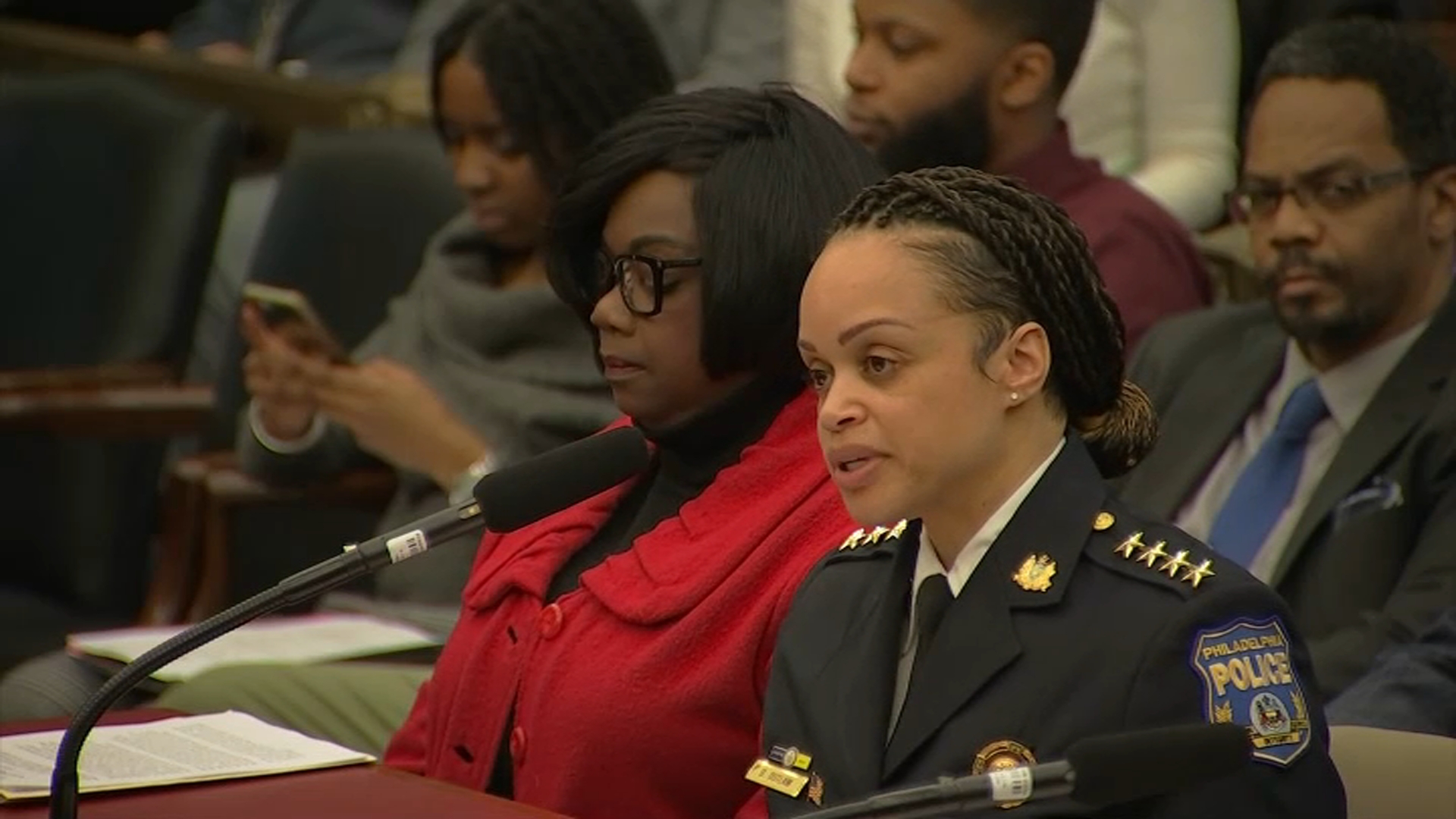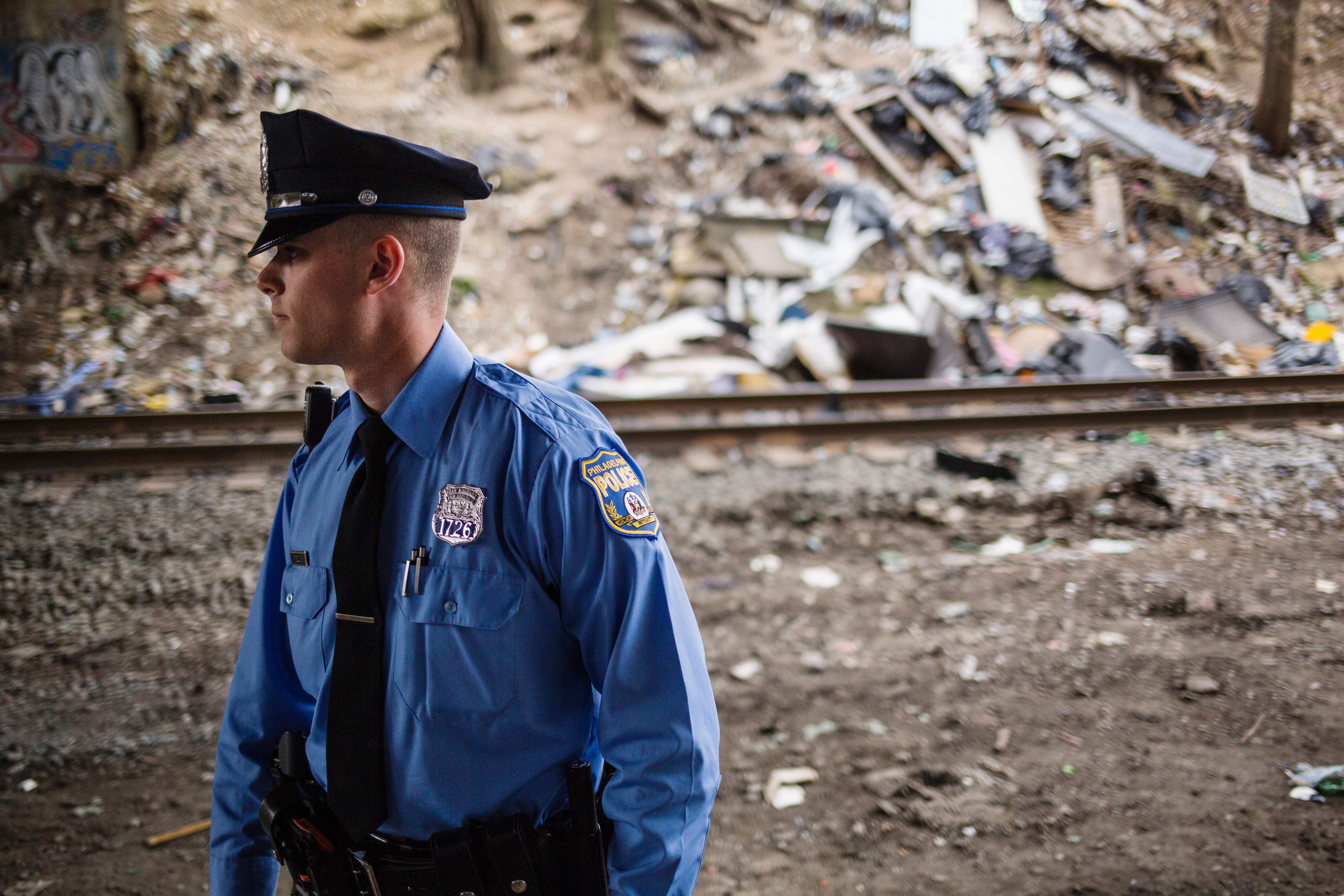Philadelphia’s top cop, as well as its mayor, delivered an embarrassing about-face Thursday, admitting that the use of tear gas on protesters trapped on a highway embankment was not preceded by violence on the part of the marchers.
Police Commissioner Danielle Outlaw said it was wrong for Philadelphia Police Department SWAT officers to use pepper spray, tear gas, white smoke, beanbag rounds and plastic pellets on protesters and reporters on Interstate 676. Some officers used force “gratuitously,” she said.
Both she and Mayor Jim Kenney apologized to protesters and the public after initially claiming that the police use of force was due to protesters being violent. No evidence of the claim emerged, and Outlaw called her prior statements "substantively inaccurate."
“I apologize sincerely to the peaceful protesters out there on that highway on June 1, who were simply choosing to exercise their right to speak out against injustice and institutional racism," Kenney said.
Managing Director Brian Abernathy said previously that a "Unified Command" group consisting of Kenney, Outlaw, Fire Chief Adam Thiel and others in the Kenney administration had given pre-approval of the use of tear gas and other “less lethal munitions” if officers on the ground determined that the situation warranted the force.
Former Philadelphia Police Department Deputy Dennis Wilson, who was the incident commander on that day, came forward and said he gave the OK to use tear gas and less-than-lethal force based on what he could see and hear from police scanner traffic. But, he added, he did not seek prior approval from Outlaw, as he was instructed to do.
Wilson will take a voluntary demotion to the rank of chief inspector.
"For violating the rules of engagement and the commissioner's trust, I'm gonna take a voluntary demotion," he said.
Outlaw said a SWAT officer seen on video using pepper spray on kneeling protesters will be suspended for 30 days with intent to dismiss. He faces administrative charges of conduct unbecoming of an officer and unauthorized or excessive use of force. The internal affairs case was turned over to the District Attorney’s office for review, Outlaw added.
The commissioner said a moratorium on the use of tear gas to disperse crowds will now be in place and that the only time police will use the tactic is when they are confronted with an "armed and dangerous individual."
The reversal comes only hours after City Council voted to hold hearings over the city’s response during days of protest that were punctuated by looting and property damage but also by cases of police violence.
Councilwoman Helen Gym, who introduced the idea to hold hearings over the matter, pointed to a New York Times video breakdown of the confrontation on I-676, which both Kenney and Outlaw also referenced.
Video of the incident shows officers violating the PPD’s own policy on the use of pepper spray.
Gym also pointed to the use of tear gas in other areas of the city, where some residents who weren’t protesting ended up getting sprayed, too.
One of those areas was near the intersection of 52nd and Market Streets in West Philadelphia on May 31. Wilson said he did get approval from Outlaw to use tear gas at that location.
Kenney took responsibility for that decision, as well, saying that the situation at the intersection "involved violence, arson and looting." Despite that determination, Kenney was contrite over the move, noting that he never believed tear gas was effective when he saw other cities use it.
“It always seemed to me to make situations worse, and it has. But after watching the dangerous situation in West Philadelphia with businesses and police vehicles being destroyed, I gave consent nonetheless," Kenney said.
Gym contrasted the violent conduct against protesters and minorities with the police’s lack of force against armed white men who both threatened protesters and assaulted a reporter in other parts of the city, despite officers being nearby.
“The spirits of too many in our city are broken, and we need a truth and reconciliation process that starts with a full accounting of why things broke down once people stood up for Black Lives Matter and against systemic racism and police brutality,” Gym said.
NBC10's Joe Brandt and Brian McCrone contributed to this story.



